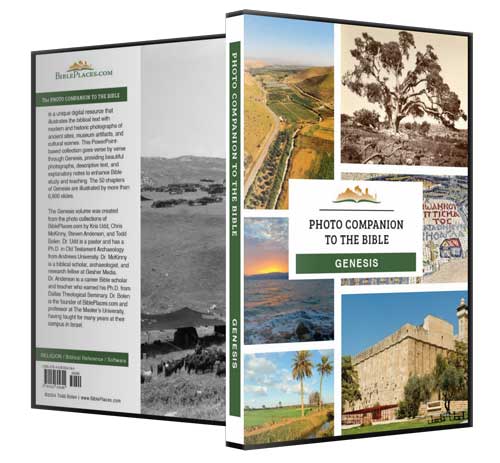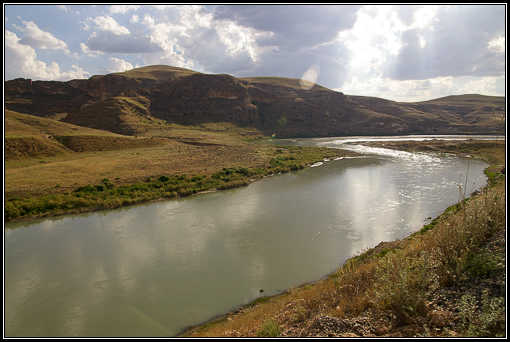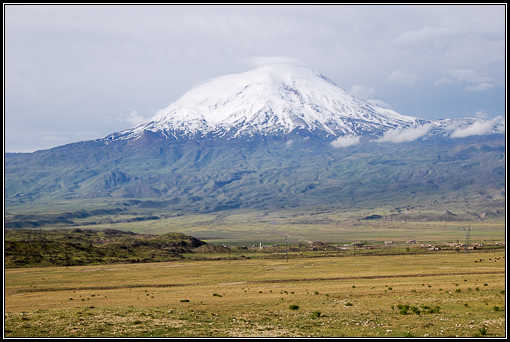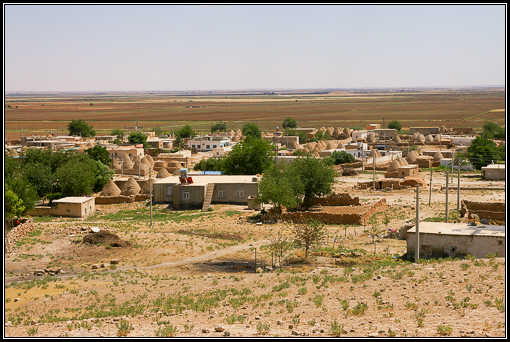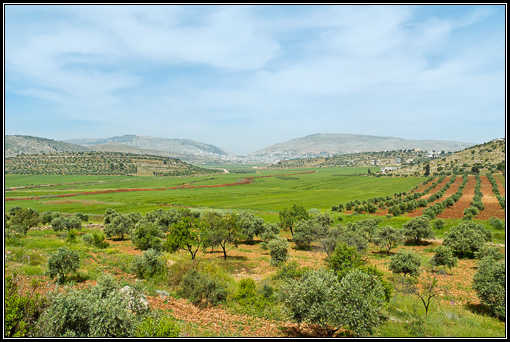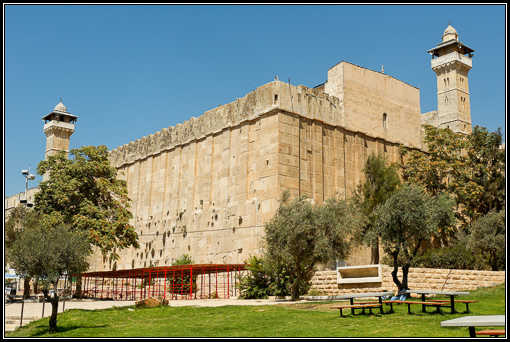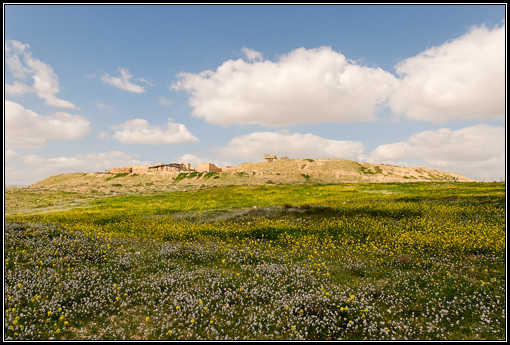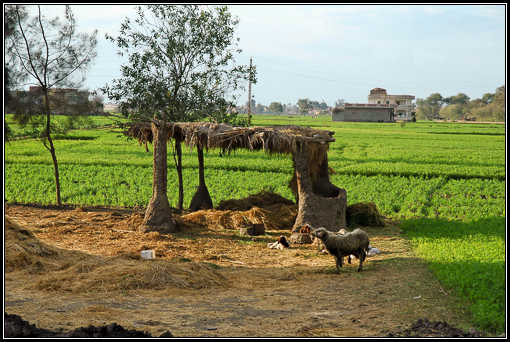Photo Companion
BiblePlaces Newsletter
Vol 23, #2 - April 9, 2024
Over the last 24 years, we’ve created more than 70 volumes of photo collections, but none has proved more demanding or taken more hours than the new Genesis volume in the Photo Companion to the Bible. The size and scope of the book of Genesis are well-known, from Creation to Egypt, with 50 chapters describing God’s work through the generations from Adam to Jacob’s sons.
From a visual perspective, the possibilities are tremendous, from illustrating the six days of creation and the Garden of Eden to Israel’s sojourn in Goshen. We have assembled many of the obvious photos, such as the patriarchs’ travels at Haran, Shechem, Bethel, Moriah/Salem, Hebron, and Beersheba. But there is so much more, with imagery of tent-dwelling, shepherding, and farming, with an abundance drawn from museum artifacts, detailed models, and ancient reliefs.
We really went all out to make this the most useful photo collection possible. This collection includes many aerial photographs, satellite images, and detailed maps to provide the big picture. We have more images from more photographers from more sites and museums than ever, including a number of unique images that we received special permission to share.
We are offering Genesis this week for only $79 for nearly 7,000 photos with explanatory notes (DVD+download or download-only). Your purchase includes all future updates to the volume at no charge, and it supports our efforts to continue developing the Photo Companion to the Bible. Whatever you are studying or teaching in Genesis, this collection offers the images you don’t even know to look for, all in the easy-to-use PowerPoint format. We are confident that you’ll love what you discover here and find it useful for years to come.
Todd Bolen
Photographer, BiblePlaces.com
Professor of Biblical Studies, The Master’s University
Genesis
The first book of the Bible records the origin and outworking of creation, marriage, sin, judgment, redemption, sacrifice, blessing, curse, faith, land, nations, kings, prophets, and so much more. Our new volume in the Photo Companion to the Bible illustrates every nook and cranny of the book of Genesis, with a goal of providing whatever photograph you’re looking for (and many you didn’t know existed), with a total of nearly 7,000 slides. Some of the highlights include:
- Illustrations of ancient creation accounts in reliefs, paintings, and tablets
- “Tree of life” and serpent iconography in ancient art
- Cultural images of shepherding, farming, and tent-dwelling
- Images of ancient wooden ships and modern replicas of the ark
- Fossilized creatures and geographical features related to a global flood
- In-depth examination of the “Table of Nations” with geographical locations of seventy people groups
- Images of brick-making techniques and ancient brick towers
- Photos of the locations visited and routes traveled by the patriarchs, including Haran, Shechem, Bethel, Jerusalem, Hebron, Mamre, and Beersheba
- Excavations and artifacts from Egypt relevant to Joseph and his family
- Free download: Genesis 15 (130 slides)
Purchase today to get our best price ($149 $79): DVD+download or download-only
What Others Say...

“The Genesis installment of the Photo Companion to the Bible series is outstanding! It features a collection of premium PowerPoint slides that present images, detailed explanations, and insights organized to align with each verse of the biblical narrative. This Photo Companion is designed to bring the Scriptures to life for theological students or church members. It comes with my highest recommendation.”
—T. Desmond Alexander, Senior Lecturer in Biblical Studies, Union Theological College, Belfast; author of From Paradise to the Promised Land

“BiblePlaces.com presents a prized collection of photographs, maps, and charts that are tied directly to the text of Genesis. Their expert knowledge of the lands of the Bible positions them uniquely to assemble this helpful aid to learning and envisioning the world of Israel’s forefathers. Because Dr. Bolen is an accomplished photographer, his images are sharp and clear. The availability of slides convenience any teacher who supplements the text with valuable insights. I recommend it for all who love the Scriptures.”
—Kenneth Mathews, Professor of Divinity Emeritus, Beeson Divinity School; author of Genesis in the New American Commentary series
The Photo Companion to the Bible
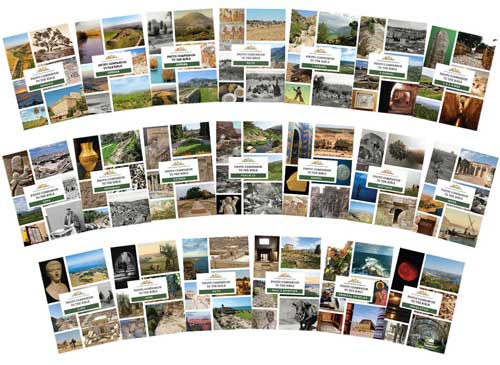
Old Testament (13 volumes): Genesis, Joshua, Judges, Ruth, 1 Samuel, 2 Samuel,1 Kings, 2 Kings, Ezra, Nehemiah, Esther, Psalm 23, and Daniel
New Testament (19 volumes): Matthew, Mark, Luke, John, Acts, Romans, 1 Corinthians, 2 Corinthians, Galatians, Ephesians, Philippians, Colossians and Philemon, 1 & 2 Thessalonians, 1 & 2 Timothy, Titus, Hebrews, James, 1 & 2 Peter, Jude, 1, 2, & 3 John, and Revelation
COMPLETE SET (32 volumes): Purchased individually: $1,800;
Set Discount: $599; with coupon ALL32: $499
A Photo Every Day
Featured BiblePlaces Photos:
The Book of Genesis
The featured photos this month come from the Genesis volume of the Photo Companion to the Bible, a broad and deep collection of images illustrating God’s plan to bring blessing to all the world through the chosen seed.
For more free photos, download the Genesis 15 PowerPoint (130 slides). These and nearly 7,000 photos are included in the new Genesis volume in the Photo Companion to the Bible.
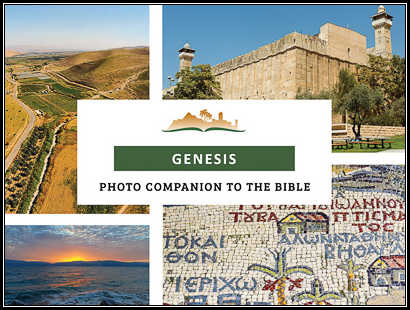
Genesis 2:10 indicates that a river flowed from the land of Eden and divided into four rivers. The reference to the Tigris (shown above) and Euphrates Rivers as two of the four leads many to think that the Garden of Eden was located in Mesopotamia, though scholars debate whether the garden was in northern or southern Mesopotamia. Topographical changes during Noah’s Flood further complicate the effort to narrow down the location. In any case, the abundance of water in Eden marks it as a place of life from which Adam and Eve would be banished all too soon.
The waters of Noah’s Flood began receding when the Lord sent a wind over the earth, and the ark came to rest on the mountains of Ararat (Gen 8:1-4). The mountain shown here, known as Greater Ararat or Büyük Agri Dagi, is the mountain most commonly associated with the landing site of Noah’s ark in modern times. The tradition goes back at least to the 11th or 12th centuries.
Mount Ararat, with an elevation of 16,945 ft (5,165 m), is the highest mountain in all of Turkey, which is probably why it was identified as the landing site of the ark. The mountain is located within the territory of ancient Urartu, as attested by numerous forts in the surrounding area. Various explorers have claimed to have seen remains of the ark on the slopes of Mount Ararat, though none of the supposed discoveries has been verified archaeologically. Other sites have been proposed as well, among which Mount Judi (Cudi) is supported by a number of ancient traditions.
The people of the post-Flood world determined to stay together and make a name for themselves, rather than scattering in obedience to God’s command to fill the earth for the glory of his name. They settled on the plain in Shinar and made bricks in order to build a city and a tower (Gen 11:1-4).
This relief from the tomb of Rekhmire in Thebes, Egypt, illustrates an ancient method of making mudbricks. In the lower center, men use hoes to dig up the dry clay soil that would be the base for the bricks. On the far left, two men draw water from a pond to mix with the soil. At the upper right, two men mix water and soil in a pit to create a clay that is the right consistency for the bricks. At the upper center, to the right of the pond, a man lays out row after row of bricks using a wooden brick mold. In the continuation of the scene (off the right side of this photo), the men stack bricks and carry them off using shoulder yokes. The Photo Companion to the Bible includes images both with and without identifying labels, for maximum usefulness.
Called out of Ur of the Chaldeans, Abram traveled to the city of Haran where he settled until the death of his father Terah (Gen 11:31). Later Jacob traveled here when fleeing from Esau, and he worked for his uncle Laban for twenty years in exchange for two wives and a vast number of animals.
Haran is located in a fertile plain watered by the Balikh River, a major tributary of the Euphrates River. The traditional “beehive” houses visible in the city today are constructed entirely without wood, a scarce commodity in this region. Though constructed in the last two centuries, these houses preserve an ancient building technique.
After traveling 400 miles (640 km) from Haran, Abram and Sarai arrived at Shechem (Gen 12:6). Here God promised to give the land to Abram’s seed. Shechem is located in Israel’s central hill country, between Jerusalem and Galilee, flanked by Mount Gerizim on the south (left) and Mount Ebal on the north (right).
Although not easily defended, the city is well-situated because of the fertile valleys, springs, and communication routes surrounding it. Abraham had large flocks, and the grazing land available in this area would have been appealing to him. Shechem continued to play a prominent role in Israel’s history, including in the days of Jacob, Joshua, and Jeroboam.
For reasons not explained, Abraham did not remain long in Shechem but lived for many years in the region of Hebron and its neighbor, Mamre. He was living in this area when his wife Sarah died, and Genesis 23 records Abraham’s negotiation to purchase a field with a cave to serve as her tomb. Later Abraham, Isaac, Rebekah, Jacob, and Leah were laid to rest in this same tomb.
The traditional burial place of the patriarchs, known as the Cave of Machpelah, was venerated in the 1st century BC, and King Herod built a large enclosure over the site. A considerable portion of that enclosure still stands, and its architectural style is similar to that of Jerusalem’s Temple Mount, including the size of the stones (up to 24 feet [7 m] long), the type of masonry (dry), and the style of pilasters (or engaged columns). The largest stone is more than 24 feet long by 4.5 feet high (7.3 x 1.4 m). Underneath the structure is a stairway, a corridor, and two burial caves, believed to be the ancient tomb. Political sensitivities have precluded all but surreptitious investigations of the underground areas.
Isaac was clearly a “chip off the old block,” resembling his father Abraham in faith, deceit, and geographical interests. Both lived in Gerar, and both dug wells in Beersheba (Gen 21, 26). The site shown here is known as Tel Sheva, and it has extensive remains from the time of the Israelites. Ancient remains spanning millennia have also been found underneath the modern city of Beersheba, providing another possible location for the setting of the patriarchal accounts.
Beersheba was also important in Jacob’s life, for he was living in Beersheba when he deceived his father over the family blessing (Gen 26:5). Many years later, the Lord appeared to Jacob in a vision at Beersheba and promised that he would bring him back from Egypt (Gen 46:1-5).
Joseph orchestrated matters so that his family would be allowed to settle in the region of Goshen, an area ideal for shepherds and separated from the Egyptian populace (Gen 46:31-34). While the name Goshen is not attested in ancient Egyptian literature, the evidence in the Bible points to a location for Goshen in the eastern Delta region. This photo was taken in that area.
Egyptian records confirm that Canaanites moved into the eastern Delta, and this fits the location of the “land of Rameses” which was likely related to the city of Rameses, today identified as Qantir in the eastern Delta (Gen 47:11; Exod 12:37). The entire Delta region is quite flat and is situated only a few feet above sea level. The soil is fertile and can be easily irrigated under normal circumstances.
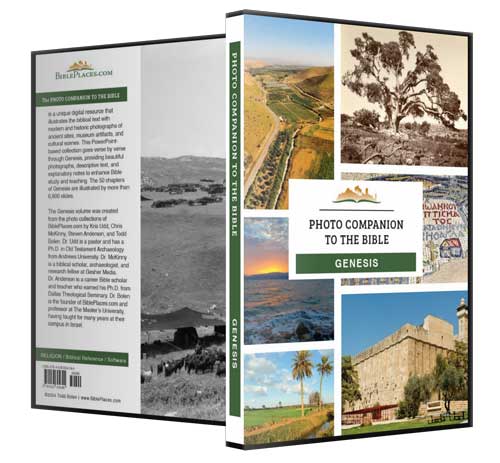
This week you can purchase the Genesis volume at our launch price of $79, including immediate download and free shipping (reg. $149). This unique collection includes more than 6,800 PowerPoint slides illustrating the entire book by chapter and verse. Purchase the collection as a DVD+download or as download-only.
Share This Newsletter
Do you know someone who would enjoy this newsletter? Feel free to pass it on to friends you think might appreciate it. They can subscribe here.
The BiblePlaces Newsletter is cost-free and spam-free. Email addresses will never be used for any purpose other than this newsletter. If you have questions about the subscription process, see this page.
All contents © 2024 Todd Bolen. Text and photographs may be used for personal and educational use with attribution. Commercial use requires written permission.
